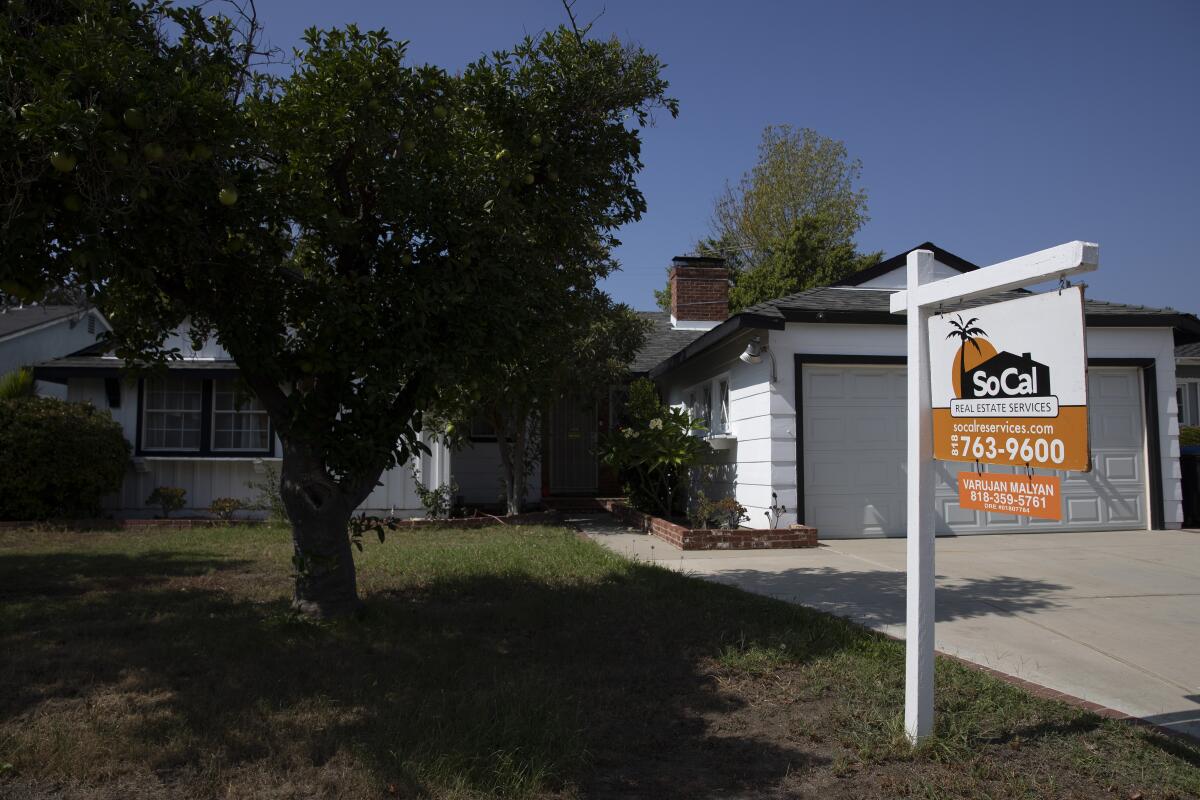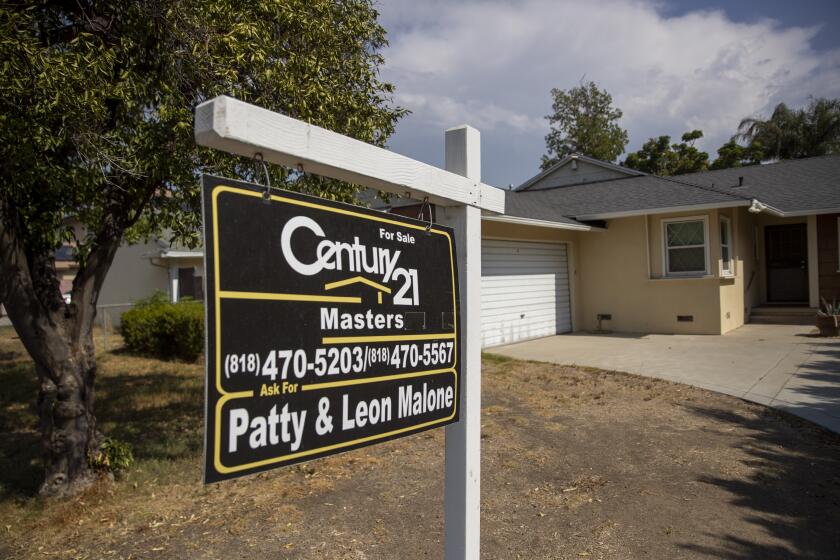Home buyers get some relief as mortgage rates come off 7% highs

- Share via
In October, mortgage interest rates topped 7% for the first time in two decades, the latest milestone reached this year amid a surge in borrowing costs.
But potential home buyers may have noticed something different recently: Rates are falling.
On Thursday, mortgage giant Freddie Mac reported that the average on a 30-year fixed home loan dropped for the sixth straight week, hitting 6.27% for the week that ended Wednesday.
To buyers who last year enjoyed rates of 3% and below, the change might seem minor. But the drops can equal hundreds of dollars less spent on monthly payments and some experts say there’s growing signs rates may not rise much from here and could drop further.
“There’s a good chance we have seen the top” in mortgage rates, said Keith Gumbinger, vice president of research firm HSH.com.
Rates have fallen from 7% because there are signs inflation may have peaked after two better-than-expected reports on consumer prices, analysts said.
Since mortgages are bundled together and sold on the secondary market, investors in those mortgages want a higher return — a higher interest rate — when inflation worsens and increasingly erodes the value of their investments.
An expectation that the Federal Reserve’s actions to tame inflation will cause a recession has also helped bring down mortgage rates, due to a complicated interplay of how the Federal Reserve and investors react to economic downturns.
Southern California home prices fell again in November, the result of high mortgage interest rates that have sapped demand.
For now, the current average mortgage rate of 6.27% is more than double the 3.05% rate of a year earlier, but down from a peak of 7.08% reached in October and November.
Those changes mean someone getting the average rate and putting 20% down on an $800,000 house would now pay $1,576 more a month than they would have a year ago, but $343 less than when rates peaked this fall.
With the somewhat improved lending picture, coupled with home prices that have come down a few percentages points in recent months, some home buyers have returned to the market.
It’s far from a flood.
Redfin agent Gregory Eubanks said he’s writing a few more offers and about 20 people strolled through his recent open house for a $950,000 townhome in Los Angeles’ Mid-City neighborhood.
He estimated that was roughly double the traffic he’d have seen when rates were above 7% and about half what he’d have expected at the beginning of the year.
Similarly, a Redfin index of home buyer demand, which tracks requests for Redfin services, is up 10% from late October, but down nearly 30% from last year.
“We’ve seen a little bit of a resurgence,” Eubanks said. “But there’s that payment shock that is still occurring. “
Some economists expect rates to decline next year, though borrowing costs may zigzag on their way down in response to economic conditions.
According to a Zillow survey of nearly 100 experts, 68% said they don’t believe the average rate on a 30-year fixed mortgage will climb above 7% anytime over the next two years. The median estimate of analysts, in that December survey, was for rates to average exactly 6% at the end of 2023, down 0.27 percentage points from today.
Gumbinger said he believes rates will range between 6.875% and 5.875% in 2023, with lots of ups and downs in between as the mortgage market reacts to various economic reports.
Greg McBride, chief financial analyst with Bankrate.com, thinks rates will fall to 5.25% at the end of next year. But he cautioned that if “inflation surges again, the same is likely to happen with mortgage rates.”
“We’ve been fooled by inflation multiple times — thinking it’s behind us and it turns out not to be the case,” he said.
Case in point?
After rates neared 6% in June, signs of weak economic growth and expectations that inflation would cool drove borrowing costs down, with rates dipping under 5% by early August.
Then, as the economy and inflation proved resilient, rates started their upward march past 7%.
Higher costs and rising inflation have sent float builders looking for ways to cut expenses for the Rose Parade on New Year’s Day.
Home buyers and sellers have a lot riding on the direction of borrowing costs.
Home prices have declined recently — about 6% from May in Los Angeles County — largely because higher rates have sapped people’s buying power.
Those declines haven’t yet made up for the increase in rates.
If someone bought today’s typically priced home, they’d still have a higher monthly mortgage payment than if they bought the typically priced home at May’s home price peak, since mortgage rates were lower then, according to a Zillow analysis that assumed 20% down in both cases.
If prices fall further, or mortgage rates decline further, the typical monthly payment could fall below May’s level.
One caveat: If rates fall, it may limit price declines since buyers could afford more.
While it’s hard to predict what comes next, economists said it’s doubtful rates will fall back to 3% or below anytime soon.
That’s in part because such rock-bottom rates were the result of extremely loose monetary policy during the height of the pandemic, something experts said the Federal Reserve isn’t likely to revisit even if the economy falls into recession.
“Remember, we got to [such low rates] under the most extraordinary of conditions,” Gumbinger said.
More to Read
Sign up for Essential California
The most important California stories and recommendations in your inbox every morning.
You may occasionally receive promotional content from the Los Angeles Times.













